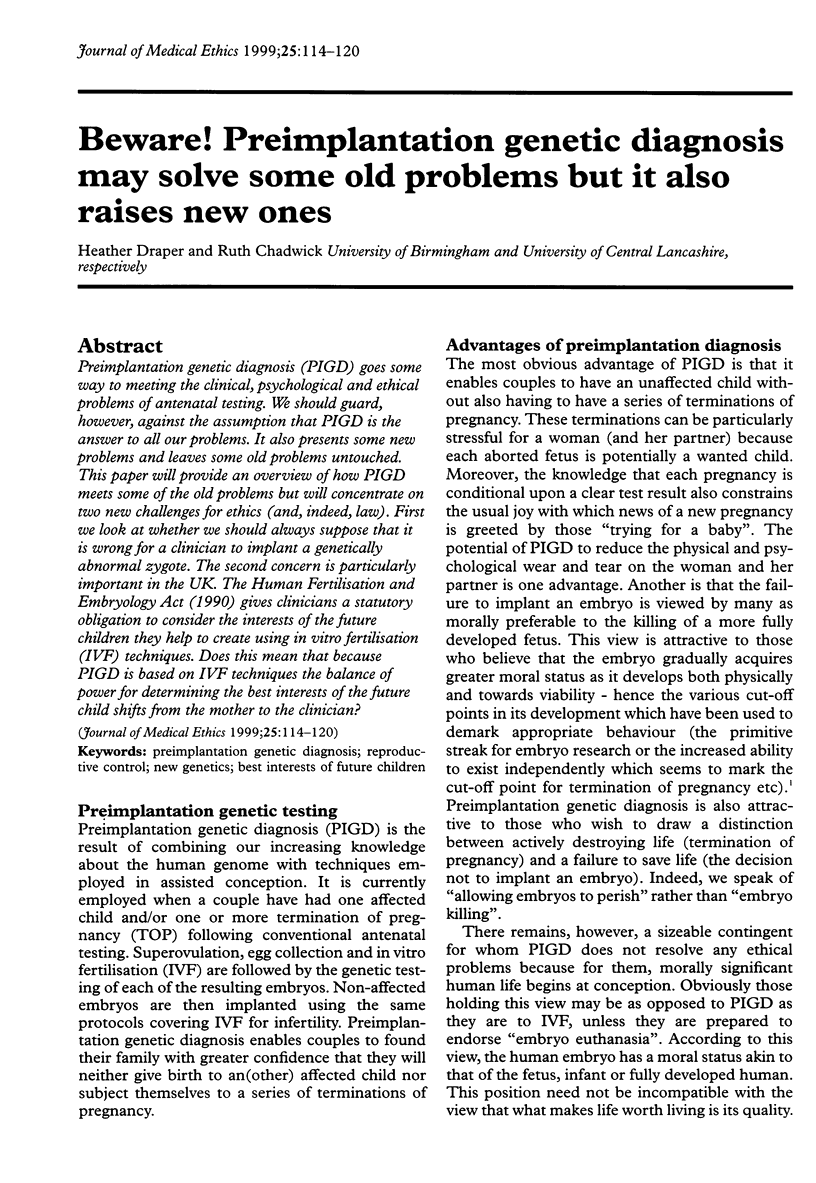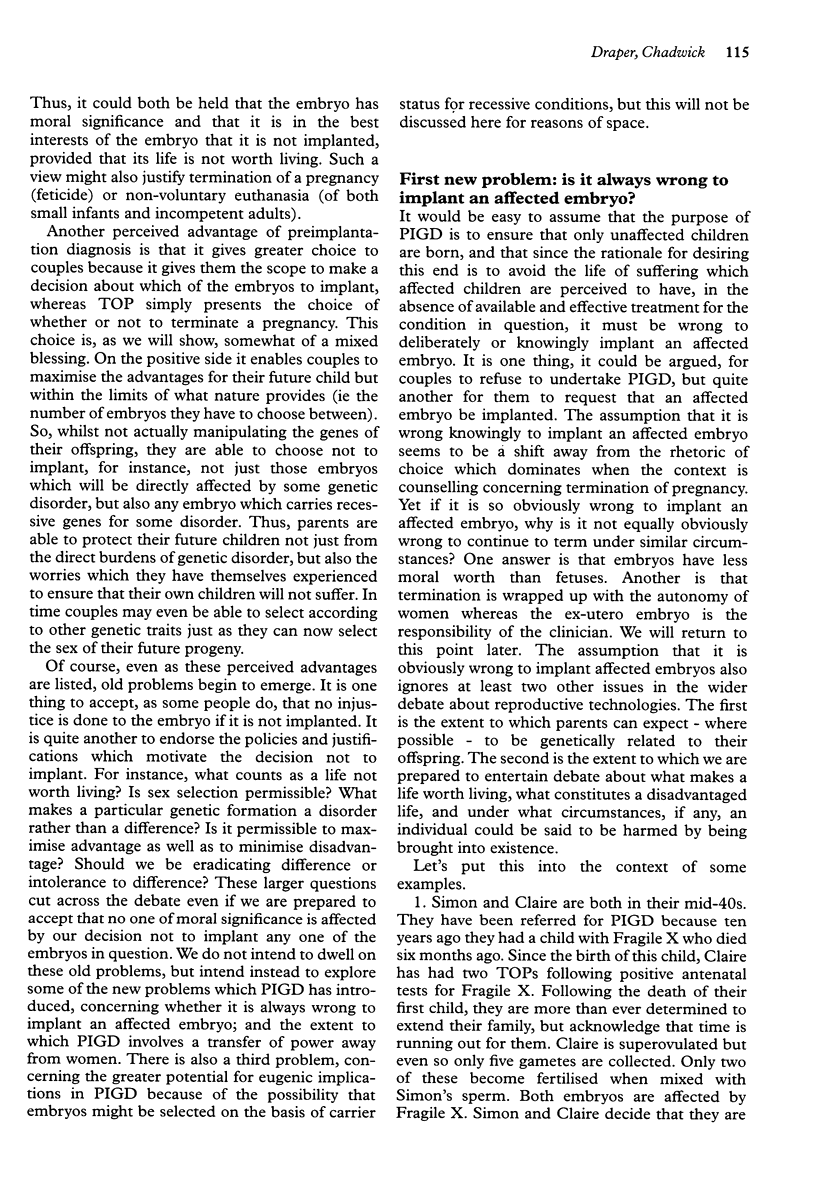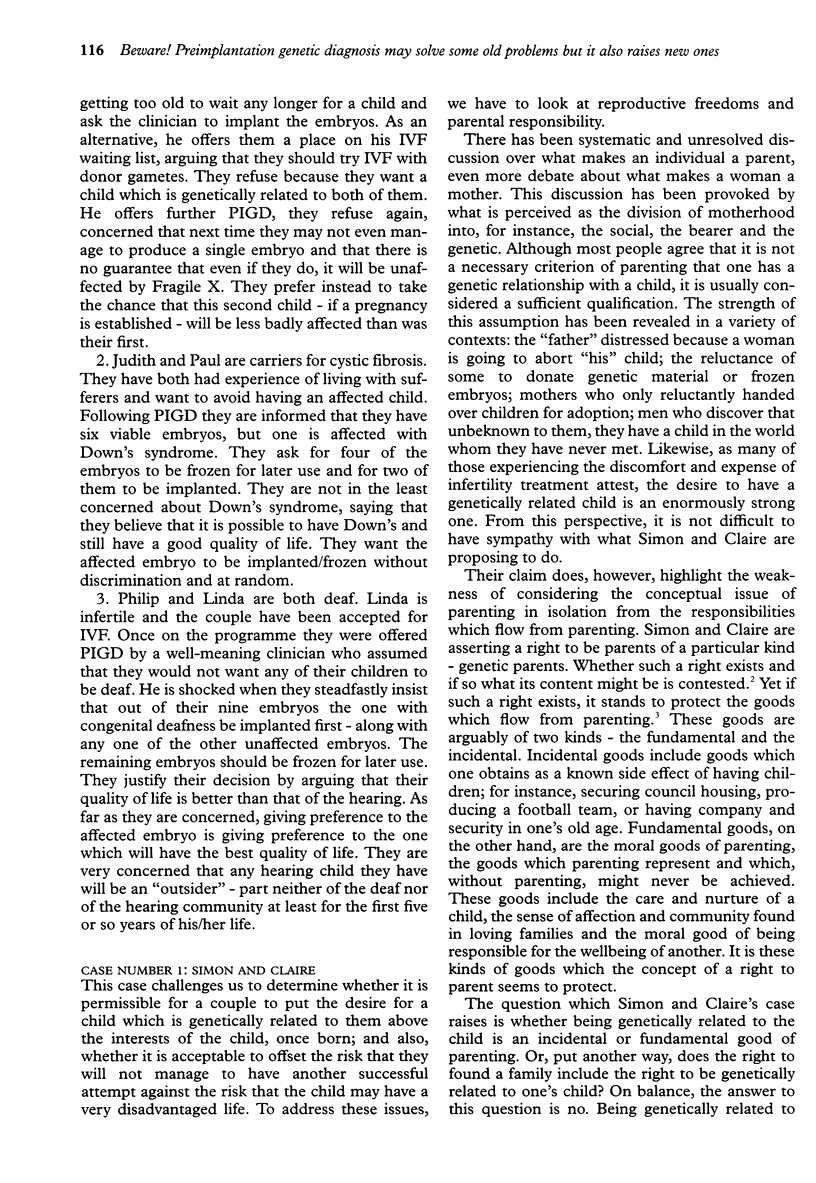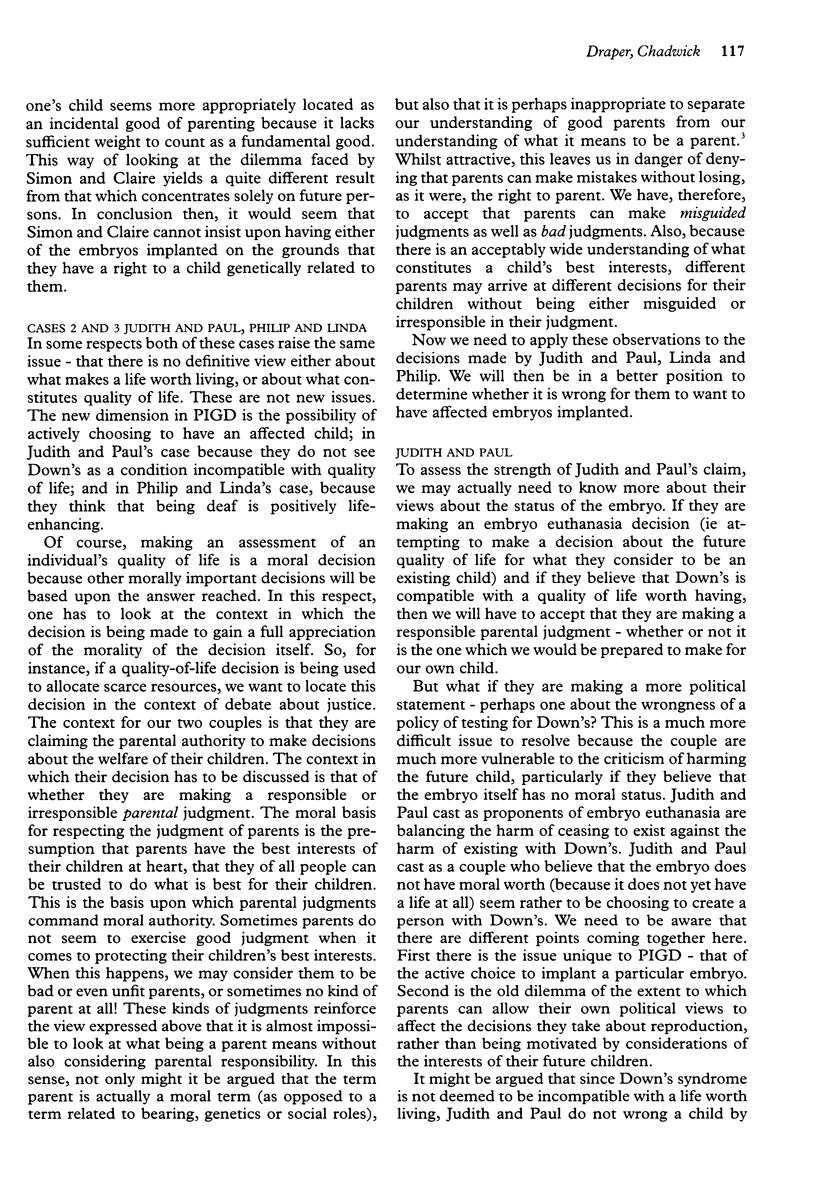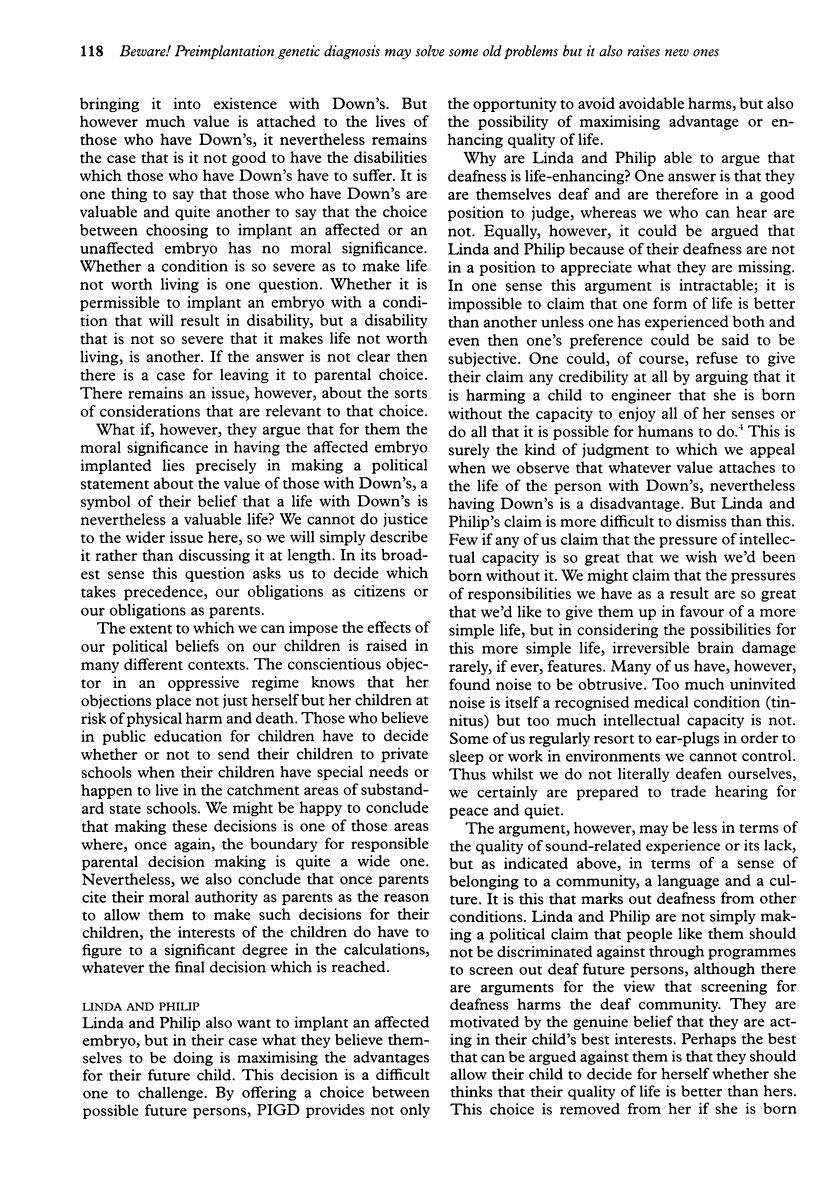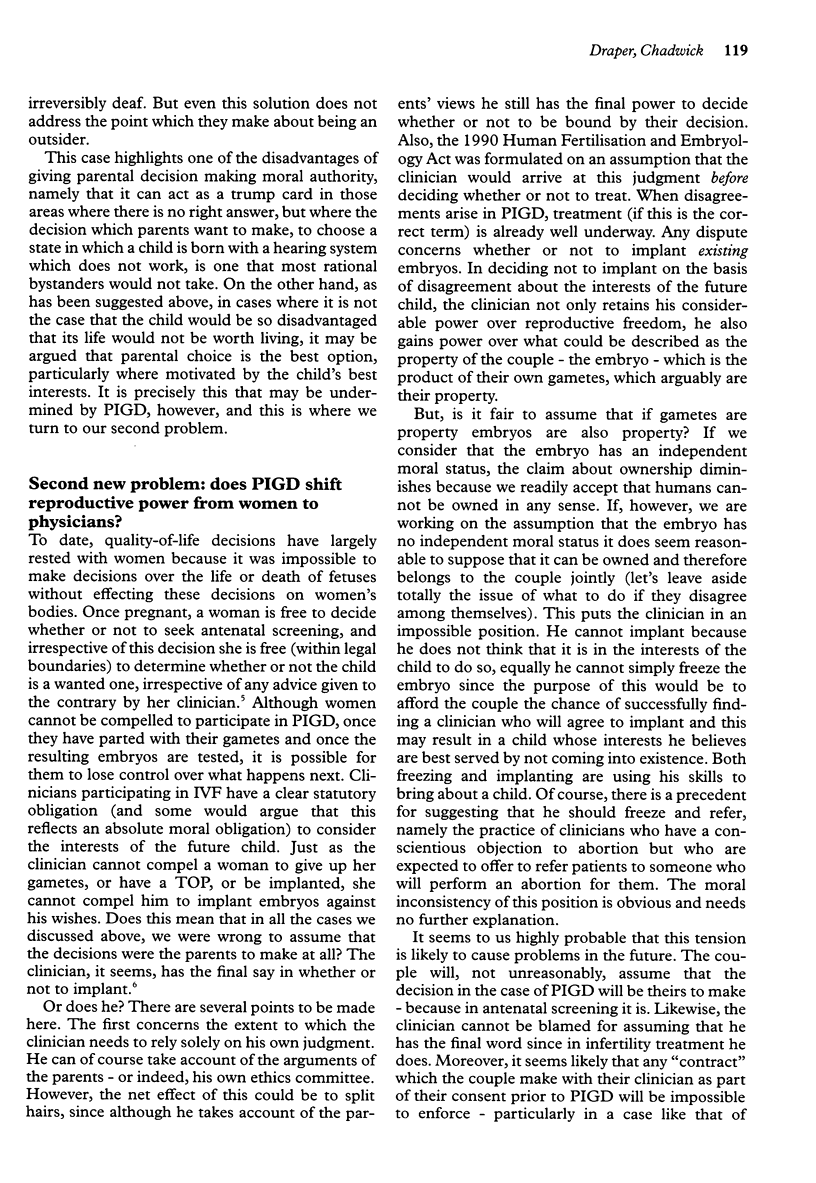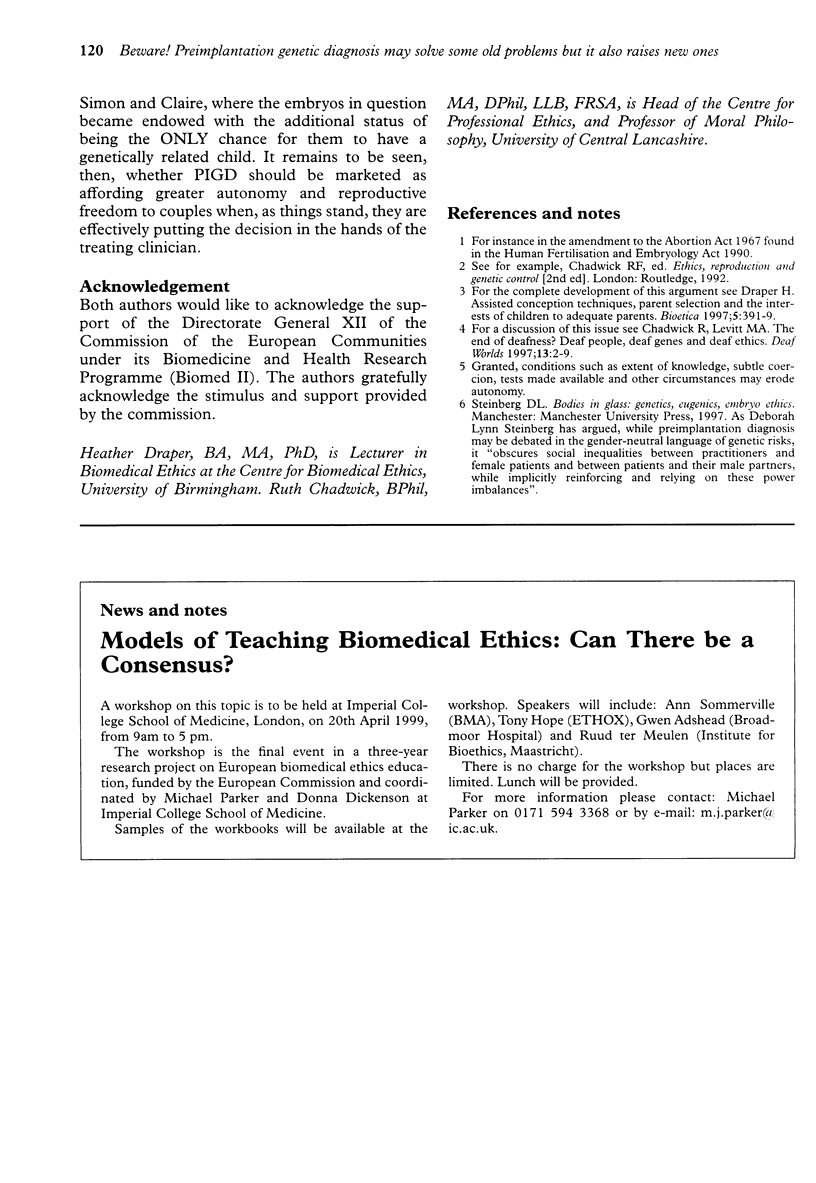Abstract
Preimplantation genetic diagnosis (PIGD) goes some way to meeting the clinical, psychological and ethical problems of antenatal testing. We should guard, however, against the assumption that PIGD is the answer to all our problems. It also presents some new problems and leaves some old problems untouched. This paper will provide an overview of how PIGD meets some of the old problems but will concentrate on two new challenges for ethics (and, indeed, law). First we look at whether we should always suppose that it is wrong for a clinician to implant a genetically abnormal zygote. The second concern is particularly important in the UK. The Human Fertilisation and Embryology Act (1990) gives clinicians a statutory obligation to consider the interests of the future children they help to create using in vitro fertilisation (IVF) techniques. Does this mean that because PIGD is based on IVF techniques the balance of power for determining the best interests of the future child shifts from the mother to the clinician?
Full text
PDF